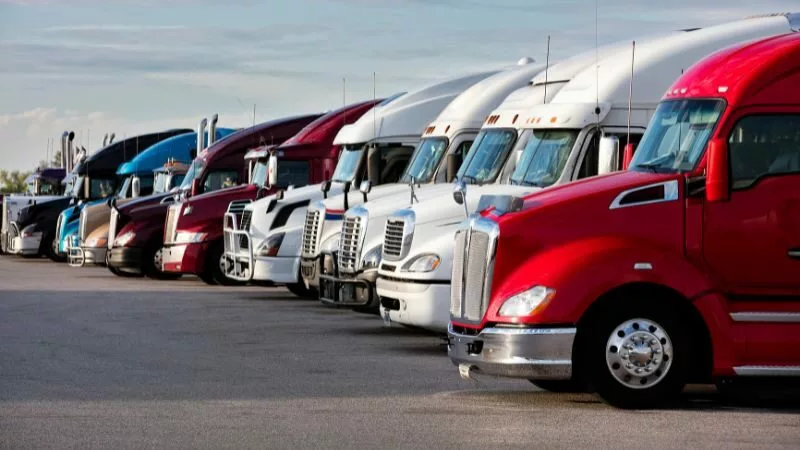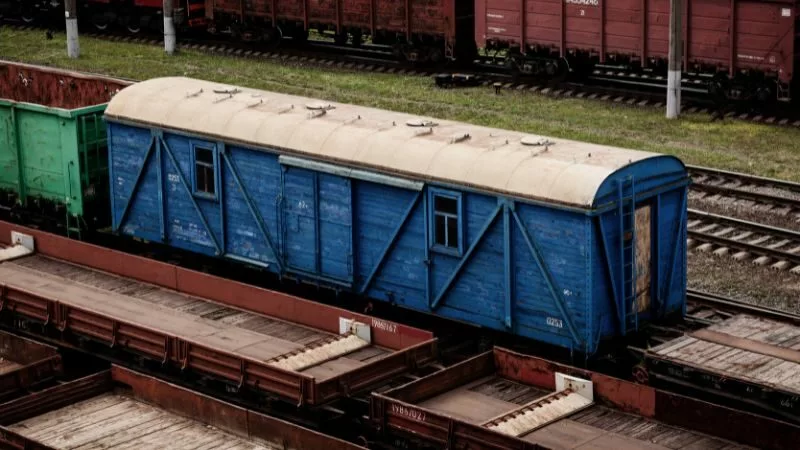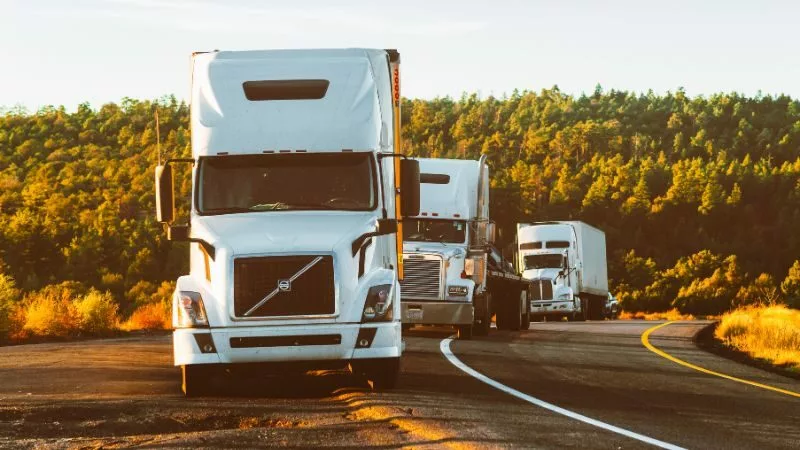The demand for freight transportation surged through most of 2021 as economic activity rebounded post-pandemic. Trucking plays a vital role in China’s vast domestic supply chains, shuttling raw materials and finished products between factories, ports and distribution centers across diverse regions.
This article provides an overview of China’s trucking and road freight industry. It will explore the scale and scope of operations, from long-haul routes spanning thousands of kilometers to last-mile urban deliveries. Key players in the market will be introduced, along with the types of vehicles and trailers commonly used for different cargo types. Regulatory frameworks and emerging technologies influencing the sector will also be covered. Luckystar Logistic will provide you with the best shipping service.
Everything You Consider in Cross-Border Trucking and Road Freight

Different Trucking Terms
Less Than Truckload (LTL)
Less Than Truckload (LTL) refers to a shipping service for relatively small loads or quantities of freight that do not require an entire truckload. LTL shipments usually range from 150 to 15,000 pounds in size.
Since each shipment does not fill an entire trailer, LTL carriers consolidate multiple LTL shipments from different customers onto one truck. This allows for better utilization of trailer space and makes LTL a cost-effective option compared to sole-use Full Truckload for light or moderate volumes of freight.
Some key aspects of LTL include:
- Consolidation: LTL carriers pick up small shipments from various businesses and efficiently load them together onto trailers to maximize space.
This consolidation process is called “assembly service”. - Transit: The consolidated loads then make their way through the carrier’s transportation network, which may involve some intermediate stops, transfers between trucks, or short-term storage en route before final delivery.
- Cost Savings: By essentially sharing space on trucks, LTL shippers only pay for the portion of the trailer their freight occupies unlike paying for an entire truck. This makes it affordable for shipping smaller volumes.
- Specialized Carriers: There are many large LTL carriers like FedEx Freight and Old Dominion with advanced IT and logistics capabilities tailored for the complexities of LTL shipping.
Full Truck Load (FTL)
Full Truck Load (FTL) shipping refers to a type of freight transport where an entire semi-trailer or shipping container is reserved for a single shipment from one shipper. FTL constitutes direct shipments from the point of pickup at the shipper to delivery at the consignee, with no stops in between to consolidate or deconsolidate loads.
FTL shipments require enough cargo to fill or nearly fill the entire capacity of the trailer, which is usually 48 or 53 feet in length. A standard 48-foot dry van trailer can hold about 24 pallets while a 53-footer can hold 26 pallets. The shipment travels directly from origin to destination without the freight being handled en route or transferred between trucks. This differs from Less than Truck Load (LTL) shipping where multiple shippers’ cargo is consolidated and transported together.
Some key advantages of FTL over LTL include lower shipping costs for large volumes, faster transit times since there are no stops or load transfers, and reduced handling that lowers chances of damage. FTL works well for shipments of homogeneous goods headed to a single destination like a distribution center or retailer. It is commonly used in business-to-business shipping of full pallets or containers of inventory.
Less than Container Load (LCL)
Less than Container Load (LCL) refers to a shipping method for cargo that is too small to require an entire shipping container. With LCL, multiple shippers’ consignments that do not individually fill a whole container are transported by consolidating their shipments into one shared container.
In LCL shipping, freight forwarders or carriers pick up the partial loads from different shippers and transport them to a container freight station (CFS). At the CFS, the shipments are loaded and packed together into a single container along with other LCL cargo heading to the same destination.
This process of combining LCL shipments for transport is known as consolidation or co-loading.
Some key aspects of LCL shipping include:
- Flexibility: LCL allows shippers to transport small volumes of goods without needing to fill an entire 20 or 40 foot container.
This provides flexibility for shipments between 150-10000 lbs. - Cost Savings: By essentially sharing space on containers, LCL shippers save significantly on transport costs compared to sole-use Full Container Load (FCL).
- Additional Handling: There are more intermediary steps like unloading and sorting LCL cargo at container yards compared to direct transport in FCL. This can increase delivery times.
The Trucking Service We Offer

Flatbed trucking
Flatbed trucking refers to an open trailer with no sides or roof used to transport oversized, heavy, and irregularly shaped freight that cannot be carried in a standard enclosed trailer. Common flatbed cargo includes construction materials, heavy equipment, machinery, pipes, and logs. Flatbeds allow easy loading and unloading using cranes or forklifts from any side of the trailer.
Heavy haul trucking
Heavy haul trucking is a specialized segment of flatbed trucking focused on transporting extremely oversized or overweight loads beyond typical legal weight and size limits, categorized as “heavy haul” cargo. These shipments can weigh over 200,000 pounds and occupy multiple lanes of traffic during transport. Heavy haul loads require special trailers, additional axles, specialized permits, and highly skilled drivers.
While standard flatbeds carry typical legal loads up to 48 feet long and 80,000 pounds, heavy haul expands into larger “superloads” exceeding 100 feet and 500,000 pounds using specialized equipment. These include extendable trailers, multiple trailers connected in series (“multi-axle”), and lowboy step deck trailers capable of high cargo heights. Lifting machinery like cranes and winches are also used.
Refrigerated transport
Refrigerated transport, also known as reefer transport, refers to temperature-controlled freight shipping used to preserve and protect perishable goods or products sensitive to temperature fluctuations like fresh produce, meat, dairy, flowers, and pharmaceuticals. It involves transporting cargo in specialized refrigeration units mounted on trucks, trailers, shipping containers, railcars or other vehicles that maintain precise temperatures required by the freight.
The refrigeration units contain an integrated refrigeration system typically powered by small diesel engines or electric standby motors to ensure constant preservation of cargo regardless of outside conditions. They can maintain temperatures as low as -30°C for frozen goods or 2-5°C for chilled goods by circulating refrigerated air around the cargo space. The units allow temperature, humidity and other parameters to be precisely controlled, monitored and recorded throughout transportation.
Some benefits of refrigerated transport include preventing spoilage and waste, preserving the quality and freshness of cargo like fruits or flowers, and ensuring the safety of perishable consumables like meat or pharmaceuticals not meant for freezing. However, it requires higher operating costs than ambient transport and specialized equipment maintenance.
Door-to-Door Service
You also can choose door-to-door shipping when delivery your parcel from China to ASEAN. Door-to-door shipping provides a hassle-free experience for senders by handling the entire shipping process from pickup to delivery. The shipping company transports goods from the sender’s location directly to the recipient’s address, taking care of the end-to-end movement of items without requiring involvement from either party. This allows the sender to enjoy a seamless shipping experience without having to deal with packaging, transport, or delivery logistics themselves.
Shipping Route From China to ASEAN

A major trade corridor is the New International Land-Sea Trade Corridor, which connects inland cities in western China like Chongqing to Southeast Asia by rail and sea. This intermodal corridor transports cargo by rail from Chinese cities to ports like Qinzhou, where the freight is loaded onto ships to complete the journey to Southeast Asia by sea.
Southbound train services mainly carry agricultural commodities and manufactured goods produced in western China to ASEAN countries.
In the northbound direction from ASEAN to China, the corridor transports perishable goods like fruits and vegetables from Southeast Asia, which are shipped to Qinzhou Port and then transported inland to China by rail.
Another major route is the Kunming-Singapore railway, which heads south from Kunming through Laos, Thailand and Malaysia down to Singapore. Sections within Laos and China have been completed, while Thailand and Malaysia segments are under construction. Additionally, a western high-speed route starts from Kunming into Myanmar, Thailand and Malaysia. When finished, these lines will enable train transport from Kunming all the way to Singapore.
Transportation Time and The Cost and Fees
Understanding the timeframes and associated costs involved in transporting goods is essential for effective supply chain and logistics planning. This section provides insight into standard transportation times and average fees across common shipping methods.
From China to ASEAN
| Country | Transit Time | Cost per CBM |
|---|---|---|
| China-Vietnam | 3 days | $260-$360 |
| China-Laos | 1 day | $260-$360 |
| China-Thailand | 3 days | $260-$360 |
| China-Malaysia | 5 days | $260-$360 |
| China-Myanmar | 3 days | $260-$360 |
| China-Cambodia | 3 days | $260-$360 |
From China to Europe
Here is a table summarizing the border transportation times from China to Europe and Europe to China by rail:
| Route | From China To Europe | From Europe To China |
|---|---|---|
| West China (Xi’an, Chongqing etc.) | 7-9 days | 7 days (Eastern Europe) 9 days (Western Europe) 10 days (Southern Europe) |
| Central China (Wuhan, Zhengzhou etc.) | 9-10 days | 7 days (Eastern Europe) 9 days (Western Europe) 10 days (Southern Europe) |
| East China (Beijing, Shanghai etc.) | 11 days | 7 days (Eastern Europe) 9 days (Western Europe) 10 days (Southern Europe) |
The times and fees in this table represent the industry averages. The Luckystar Logistic fleet can offer services that are more competitive in pricing while exceeding average speed expectations. Please get in touch with us for a customized quote.
In addition to ground shipping options, we also provide high-quality air freight and sea freight services if you require alternative transportation methods. Reach out and we will prepare an individualized proposal to meet your specific delivery needs and budget.
Prohibited Items For Road Freight in China

China’s national railway operator China Railway has strict policies banning certain items from being transported as freight on its rail network.
According to China Railway’s regulations, prohibited rail cargo includes:
- Hazardous materials like explosives, flammable substances, radioactive materials, or corrosive chemicals that can pose safety risks
- Items banned by Chinese laws and regulations such as narcotics, psychotropic substances, toxic chemicals
- Living animals
- Valuables like artwork, antiques
- Oversized cargo that exceeds the dimensions of rail freight containers
- Waste materials, refuse, e-waste or contaminated items
If you are a supplier, when importing goods from China by truck, please research customs regulations in both the exporting and importing countries. Each nation maintains its own list of products that are restricted or prohibited from entering. To avoid delays or seized shipments, importers need to verify what items require special permits, certifications or are outright banned beforehand. Particular attention should be paid to any differences in import/export rules between China and the destination market. Taking the time to understand and comply with applicable customs policies can help ensure a smooth cross-border land transport process.
Why Choose Us? Luckystar Logistic
Established in 2022, Luckystar is an esteemed member of the Federal Maritime Commission (FMC) and operates as a Non-Vessel Operating Common Carrier (NVOCC). The company’s mission is to deliver superior service quality at reduced costs, primarily serving China, the USA, Canada, and Europe. With core team members boasting over 20 years of experience in logistics, Luckystar brings considerable expertise to the table. Since its inception, the company has been dedicated to offering global door-to-door transport and logistics solutions, emphasizing dependability, adaptability, and responsiveness.
We’re not just any company; we are experts in transportation! Offering industry-leading solutions, we take pride in providing premium shipping services at a fraction of the cost of other freight forwarders, both in China and across the globe. Here’s why partnering with us is the smart move:
Accuracy You Can Count On:
Say goodbye to delivery delays and hello to timely delivery, which is vital for businesses needing to deliver goods swiftly to their customers.
Your Passport to Global Reach:
Our wide network of delivery destinations virtually covers the entire globe, offering extraordinary opportunities for businesses aiming to expand their reach. You can be assured that your package will find its way to almost any corner of the world, taking your business global!
Track with Ease:
Say goodbye to guesswork. Our stringent procedures afford you a live tracking mechanism, making it easy for you to follow your shipment’s progress at every stage of its journey. Stay informed and enjoy peace of mind, knowing exactly where your shipment is anytime you need to know.
Personalized Service, Every Step of the Way:
One of our dedicated team members will personally oversee your shipment from start to finish. This, coupled with our commitment to transparency and constant communication, ensures you are kept updated on the progress of your cargo every step of the way.
When shipping hazardous materials, it’s crucial to work with experienced service providers to ensure that your shipment is handled safely and efficiently. By partnering with us, you can have peace of mind knowing that your shipment is in good hands.
Are you looking for an experienced freight forwarder to assist you in shipping? Contact us. We’re always ready to help. Offering the unbeatable cheapest shipping rates for international shipping, our services are more affordable than you’d believe. Don’t hesitate! Get in touch with us today.
